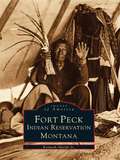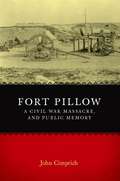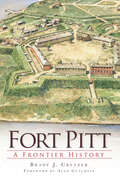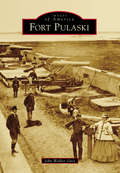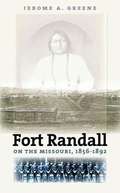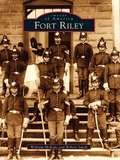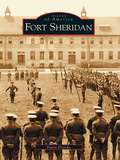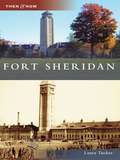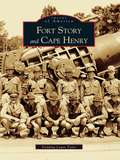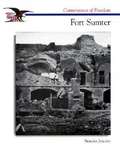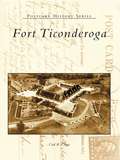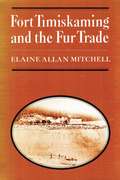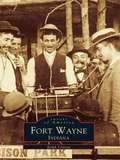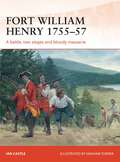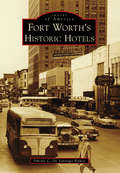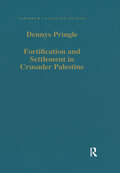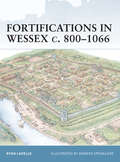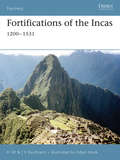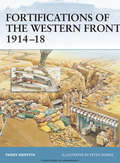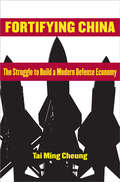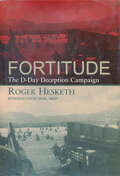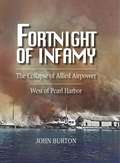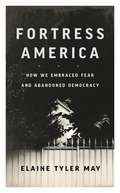- Table View
- List View
Fort Peck Indian Reservation, Montana
by Kenneth Shields Jr.For generations, the Native American people have been a society of great mystery. The Assiniboine and Sioux Indians of the Fort Peck Reservation in northeastern Montana are no exception. Althoughcenturies old, their culture is only now being rediscovered and explored. The idea to reveal some of their fascinating story stemmed from the desire,devotion, and dedication of a few individuals to embrace the opportunity to explore this wondrous race of people. In 1851 at Fort Laramie, Wyoming, the tribes of Montana and Dakota territories signed a treaty with the U.S. Government, which led to thebeginnings of many congressional hearings concerning Native American reservations. In 1886 at Fort Peck Agency, the Sioux and Assiniboine exerted their sovereign powers and agreed with the government to create the Fort Peck Indian Reservation. After much negotiation over the two million acres of land, U.S. Congress ratified the agreement in 1888. This colorful heritage and legacy of Fort Peck is commemorated by the 200 images in this photographic collection. Featured are scenes of tribal leaders, schoolchildren, families, and celebrations from the late 1880s to the 1920s. All of the images were provided by Native American families living on the Fort Peck Reservation, the Fort Peck Tribal Archives, and the Montana Historical Society.
Fort Pillow, a Civil War Massacre, and Public Memory: Civil War Battlefields and Historic Sites Recaptured (Conflicting Worlds: New Dimensions of the American Civil War)
by John CimprichAt the now-peaceful spot of Tennessee's Fort Pillow State Historic Area, a horrific incident in the nation's bloodiest war occurred on April 12, 1864. Just as a high bluff in the park offers visitors a panoramic view of the Mississippi River, John Cimprich's absorbing book affords readers a new vantage on the American Civil War as viewed through the lens of the Confederate massacre of unionist and black Federal soldiers at Fort Pillow.Cimprich covers the entire history of Fort Pillow, including its construction by Confederates, its capture and occupation by federals, the massacre, and ongoing debates surrounding that affair. He sets the scene for the carnage by describing the social conflicts in federally occupied areas between secessionists and unionists as well as between blacks and whites. In a careful reconstruction of the assault itself, Cimprich balances vivid firsthand reports with a judicious narrative and analysis of events. He shows how Major General Nathan B. Forrest attacked the garrison with a force outnumbering the Federals roughly 1,500 to 600, and a breakdown of Confederate discipline resulted. The 65 percent death toll for black unionists was approximately twice that for white unionists, and Cimprich concludes that racism was at the heart of the Fort Pillow massacre.Fort Pillow, a Civil War Massacre, and Public Memory serves as a case study for several major themes of the Civil War: the great impact of military experience on campaigns, the hardships of military life, and the trend toward a more ruthless conduct of war. The first book to treat the fort's history in full, it provides a valuable perspective on the massacre and, through it, on the war and the world in which it occurred.
Fort Pitt: A Frontier History (Landmarks Ser.)
by Brady J CrytzerLearn more about a key military bastion of the American Revolution and guard of the Western frontier, Pittsburgh, through this illustrated history. For nearly half a century, Fort Pitt stood at the forks of the great Ohio River. A keystone to British domination in the territory during the French and Indian War and Pontiac&’s Rebellion, it was the most technologically advanced fortification in the Western Hemisphere. Early Patriots later seized the fort, and it became a rallying point for the fledgling Revolution. Guarding the young settlement of Pittsburgh, Fort Pitt was the last point of civilization at the edge of the new American West. With vivid detail, historian Brady Crytzer traces the full history of Fort Pitt, from empire outpost to a bastion on the frontlines of a new republic.
Fort Pulaski (Images of America)
by John Walker GussForts are a lasting tribute to the prominence of the US military, and Fort Pulaski stands among these magnificent fortresses. Overlooking the mouth of the Savannah River and the Atlantic Ocean, Fort Pulaski is named in honor of Gen. Casimir Pulaski, Revolutionary War hero and father of the US Cavalry, which endured some of the most damaging artillery combat in early American warfare. In addition to its unfortunate notoriety for serving as the first fort where a rifled cannon was successfully tested in combat against masonry forts, it played a part in other significant events, including a baseball game during the Civil War where one of the first photographs of the sport was taken with the newly invented camera. Ultimately, the fort was considered important enough to be preserved and designated a national monument.
Fort Randall on the Missouri, 1856-1892
by Jerome A. GreeneStrategically located along the Missouri River near the present South Dakota-Nebraska border, Fort Randall served as an important outpost on the western frontier. The post provided troops and routed supplies for an assortment of government and private ventures. In Fort Randall on the Missouri, Jerome A. Greene discusses the day-to-day activities of the troops who supported military expeditions against American Indians, explored and mapped the Black Hills, and conducted routine patrols of southeastern Dakota Territory and northeastern Nebraska.
Fort Riley (Images of America)
by Robert Smith William MckaleFounded in 1853, Fort Riley was established to protect merchants and settlers on the Santa Fe and Oregon-California Trails. Fort Riley kept the peace during the Civil War and in 1893, a cavalry school began operation there. Fort Riley continued to train mounted troops during the Golden Age of Cavalry after World War I, but also served as a training site for more than 150,000 troops during the first and second World Wars. This collection of vintage images commemorating the sesquicentennial of Fort Riley is a colorful, patriotic reminder of the military post that has served the nation continuously since its founding 150 years ago.
Fort Sheridan
by Diana DretskeAmid Chicago's North Shore communities is a national landmark--the former U.S. Army Base at Fort Sheridan (1887-1993). Fort Sheridan was created out of the civil and labor unrest following the Chicago Fire of 1871, the great Railway Strike of 1877, and the Haymarket Riot of 1886. These events produced an atmosphere of insecurity, prompting Chicago's wealthiest businessmen--North Shore residents and members of the Commercial Club of Chicago--to levy their influence with the federal government in establishing an army presence in their backyards. Fort Sheridan is a place rich in the traditions of the U.S. cavalry and artillery, of training camps, and the Women's Army Corps. This illustrated history explores the many aspects of Fort Sheridan and takes the reader on a journey through military life.
Fort Sheridan (Then and Now)
by Laura TuckerFort Sheridan is a national historic treasure nestled along the shores of Lake Michigan. It was established as an army base in 1887 and decommissioned in 1993, giving way to its rebirth as a township and forest preserve. Laura Tucker, a six-year resident, avid photographer, and Fort Sheridan enthusiast, has researched and compiled a collection of photographs and facts that highlight the ever-changing uses of the structures and the chameleon-like personality of the fort.
Fort St. Joseph Revealed: The Historical Archaeology of a Fur Trading Post
by Michael S. NassaneyFort St. Joseph Revealed is the first synthesis of archaeological and documentary data on one of the most important French colonial outposts in the western Great Lakes region. Located in what is now Michigan, Fort St. Joseph was home to a flourishing fur trade society from the 1680s to 1781. Material evidence of the site—lost for centuries—was discovered in 1998 by volume editor Michael Nassaney and his colleagues, who summarize their extensive excavations at the fort and surrounding areas in these essays. Contributors analyze material remains including animal bones, lead seals, smudge pits, and various other detritus from daily life to reconstruct the foodways, architectural traditions, crafts, trade, and hide-processing methods of the fur trade. They discuss the complex relationship between the French traders and local Native populations, who relied on each other for survival and forged links across their communities through intermarriage and exchange, even as they maintained their own cultural identities. Faunal remains excavated at the site indicate the French quickly adopted Native cuisine, as they were unable to transport perishable goods across long distances. Copper kettles and other imported objects from Europe were transformed by Native Americans into decorative ornaments such as tinkling cones, and French textiles served as a medium of stylistic expression in the multi-ethnic community that developed at Fort St. Joseph. Featuring a thought-provoking look at the award-winning public archaeology program at the site, this volume will inspire researchers with the potential of community-based service-learning initiatives to tap into the analytical power at the interface of history and archaeology. Contributors: Rory J. Becker | Kelley M. Berliner | José António Brandão | Cathrine Davis | Erica A. D’Elia | Brock Giordano, RPA | Joseph Hearns | Allison Hoock | Mark W. Hoock | Erika Hartley | Terrance J. Martin | Eric Teixeira Mendes | Michael S. Nassaney | Susan K. Reichert
Fort Story and Cape Henry (Images of America)
by Fielding Lewis TylerOn April 26, 1607, the English colonists anchored at the entrance to the Chesapeake Bay and came ashore to the historic piece of land they named Cape Henry. Then, in 1917, a military post was established and fortified to protect the southern portion of the entrance to the Chesapeake Bay during World War I; it was named Fort Story. Expanded and heavily fortified to meet the demands of the Second World War, the post served as a principal installation for the Harbor Defenses of Chesapeake Bay. The big guns fell silent after that conflict, and the post became the "Home ofArmy Amphibians" with over-the-beach operations. Today Fort Story continues to provide a superb training installation for the Army Transportation Corps and Special Operations.
Fort Sumter (Cornerstones of Freedom)
by Brendan JanuaryDescribes the siege of Fort Sumter during the Civil War, 1861-1865.
Fort Ticonderoga (Postcard History Series)
by Carl R. CregoCalled "the Key to the Continent" and "the Gibraltar of the North," Fort Ticonderoga controlled the strategically critical portage between Lakes George and Champlain in the eighteenth century and played an important role in both the French and Indian War and the American Revolution. French troops began construction of the fort in 1755, calling it Fort Carillon. The British captured the fort in 1759 and renamed it Fort Ticonderoga. The storming of the fort on May 10, 1775, by Benedict Arnold, Ethan Allen, and the Green Mountain Boys was America's first victory of the Revolutionary War.
Fort Timiskaming and the Fur Trade (The Royal Society of Canada Special Publications)
by Elaine MitchellThe development of the fur trade in the Timiskaming district of northern Ontario has been largely overlooked until now, mainly because of the lack of records for the period before 1821. This gap has been partially filled by the discovery of private papers in the possession of the late Colonel Angus Cameron of Nairn, Scotland. His great granduncle and grandfather, as well as other memebrs of his family, were involved in the Timiskaming district for almost a century. These papers, plus the voluminous records of the Hudson's Bay Company, have provided the basis for the present study.Mrs Mitchell traces the history of Fort Timiskaming and its subsidiary posts from the first French establishments in the 1670s and 80s until 1870, when the Hudson's Bay territories became part of the new Dominion of Canada. She describes the exploitation of the posts by freetraders from Montreal after 1763, their purchase by the North West Company in 1795, the struggle between rival Canadian and English traders before 1821, and the events following the amalgamation in 1821 of the North West and Hudson's Bay companies.She also discusses the effect of the district's fortunes of petty traders, lumbermen, missionaries, and settlers, and offers a general picture of the country and of life at the posts. This is a work that will appeal not only to historians, but to all Canadians interested in Canada's early history.
Fort Wayne, Indiana
by Ralph VioletteIn 1895, Fort Wayne officially celebrated the centennial of the construction of a Fort at the Three Rivers by General Anthony Wayne in 1794. For the belated birthday, Fort Wayne's streets were festooned with flags and bunting. Centennial archeswere erected throughout the city, and many events filled the week-long celebration. This photographic essay examines the century since the centennial. It outlines Fort Wayne's development in the twentieth century and conveys a picture of the city at the end of the century. The significance of the rivers in Fort Wayne's development is explored. A chapter on Calhoun Street focuses on the changes the twentieth century has produced in the downtown area. Changes in residential patterns, transportation, and leisure-time activities are emphasized.
Fort William Henry 1755-57
by Graham Turner Ian CastleAfter the British garrison of Fort William Henry in the colony of New York surrendered to the besieging army of the French commander Marquis de Montcalm in August 1757, it appeared that this particular episode of the French and Indian War was over. What happened next became the most infamous incident of the war - and one which forms an integral part of James Fenimore Cooper's classic novel The Last of the Mohicans - the 'massacre' of Fort William Henry. As the garrison prepared to march for Fort Edward a flood of enraged Native Americans swept over the column, unleashing an unstoppable tide of slaughter. Cooper's version has coloured our view of the incident, so what really happened? Ian Castle details new research on the campaign, including some fascinating archaeological work that has taken place over the last 20 years, updating the view put forward by The Last of the Mohicans.
Fort Worth's Historic Hotels (Images of America)
by Simone C. De Santiago RamosFort Worth, originally named Camp Worth, was founded as an Army outpost in 1849, and the old cavalry stables became Fort Worth's first hotel. The Texas & Pacific Railroad arrived in Fort Worth in July 1876, bringing the need for more lodging. Shortly after its arrival, boardinghouses and simple accommodations were quickly opened. At the turn of the century, Fort Worth became a center for cattle ranchers, and the first luxury hotels were built. By the next decade, wealthy oil barons replaced the cattle ranchers, and the demand for larger and more elaborate hotels was established. Many of these first hotels were replaced with motor lodges and smaller chain hotels after the growth of the automobile industry; however, a few are still in operation today.
Fortification and Settlement in Crusader Palestine (Variorum Collected Studies #675)
by Denys PringleThese studies examine the physical remains of Frankish settlement in Palestine in the 12th and 13th centuries. In recent years the view that Frankish settlement was largely confined to the fortified urban centres and castles, with few westerners venturing into the open countryside, has come to be challenged in the light of new archaeological evidence and re-examination of the sources. The present studies contribute to an understanding of the nature of Frankish settlement by illustrating aspects of the relationship between fortification and settlement: in particular, the role of castles and towers in promoting settlement and providing both security and domestic accommodation; the relationship between castles, towers and other semi-fortified rural structures; the physical planning of the new towns established by the canons of the Holy Sepulchre; the measures undertaken to defend urban settlements; and the contribution that town walls and castles made to the security of the kingdom.
Fortifications in Wessex c. 800-1066
by Ryan LavelleThe defence of the 9th-century kingdom of Wessex under King Alfred against the 'Great Viking Army' is one of the major military achievements of Early Medieval history. While the guerrilla warfare in the Somerset marshes and the battle of Edington are characteristic of Alfred's military abilities, his definitive physical achievement was a series of some 30 well-structured fortifications (known as burhs) across the kingdom. Many of these fortifications survive to this day and some were even reinforced to stand up to German tanks in the expected invasion of 1940. This title describes their beginnings in the turbulent early years of Alfred’s reign as well as their subsequent development and use.
Fortifications of the Incas
by Adam Hook H. W. KaufmannThe greatest period of Inca expansion occurred during the reigns of Pachacuti (1438-71), Tupa Inca (1471-93), and Huayna Capac (1493-1527). From the mountain stronghold of Cuzco, they subjugated the surrounding kingdoms and territories, absorbing their civilizations and their peoples. By 1525, they dominated much of the west of the continent, relying on fortified strongholds, an extensive system of roads an bridges, and obligatory military service to control local populations. This title takes a detailed look at the development of Incan fortification techniques, and examines how they came to be overrun by the Spanish conquistadors.
Fortifications of the Western Front 1914-18
by Peter Dennis Paddy GriffithFollowing the early battles of 1914 along the Marne and in the Ypres salient, World War I rapidly changed from a war of movement into one of attrition, with the opposing sides entrenching themselves in a line of fortified positions from the Flanders coastline to the Swiss border. This volume details the different styles of fortification used on the Western Front throughout the course of the war, from the early ditches of 1914 to the complicated systems of 1918. It explains the development of the 'defence in depth' German system and the British reaction to it, as well as illustrating the importance of the pre-war forts, particularly around Verdun.
Fortifying China: The Struggle to Build a Modern Defense Economy
by Tai Ming CheungFortifying China explores the titanic struggle to turn China into an aspiring world-class military technological power. The defense economy is leveraging the country's vibrant civilian economy and gaining access to foreign sources of technology and know-how. Drawing on extensive Chinese-language sources, Tai Ming Cheung explains that this transformation has two key dimensions. The defense economy is being reengineered to break down bureaucratic barriers and reduce the role of the state, fostering a more competitive and entrepreneurial culture to facilitate the rapid diffusion and absorption of technology and knowledge. At the same time, the civilian and defense economies are being integrated to form a dual-use technological and industrial base.In Cheung's view, the Chinese authorities believe this strategy will play a key role in supporting long-term defense modernization. For China's neighbors and the United States, understanding China's technological, industrial, and military capabilities is critical to the formulation of economic and security policies. Fortifying China provides crucial insight into the impact of China's dual-use technology strategy. Cheung's "systems of innovation" framework considers the structure, dynamics, and performance of the defense economy from a systems-level perspective.
Fortitude: The D-Day Deception Campaign
by Roger HeskethThis declassified WWII report offers a detailed look at the Allied campaign to deceive the Nazis about the immanent attack on Normandy.As the conflict in Europe wore on, the Germans braced for an amphibious assault on France. The only question was where and when the Allies would strike. This required an intricate misinformation campaign to throw the Nazis off the scent. The objective of Operation Fortitude was to persuade the enemy that the long-awaited landings would take place in the Pas-de-Calais, and that any attack in Normandy would be nothing more than a diversionary feint that could be safely ignored. Hundreds of bogus agent reports were manufactured, an entire US Army Group was invented, false radio signals transmitted, and inflatable tanks, dummy bombers built of balsa wood and canvas landing craft were positioned where they could be photographed by the Luftwaffe. The elaborate ruse suggested an imminent amphibious assault from Dover, across the shortest stretch of the English Channel. Operation Fortitude was an extraordinary success. In this volume, the classified official history of the entire operation, written by Roger Hesketh as head of the team of D-Day deception specialists, has been declassified and released.
Fortnight of Infamy
by John BurtonWhile America was preoccupied with the aftermath of Pearl Harbor, an even greater tragedy was unfolding across Southeast Asia. From Wake Island to Burma, the Empire of Japan opened the largest front in the history of warfare: an aircraft-driven invasion of colonial possessions throughout the Far East that crumbled the entire Western imperial legacy of the nineteenth-century. Events during the first two weeks of battle set the stage for the greatest military defeats America and Great Britain would suffer during any conflict.This book offers the first comprehensive overview of the collapse of Allied air forces during the period between December 8 and 24, 1941. Written for a wide audience, it gives readers both a cockpit view of the desperate actions that took place and an understanding of why such heavy losses occurred. The narrative account includes enough detail and analysis to hold the interest of serious students of Pacific War aviation and enough exciting descriptions of air combat to attract those with little knowledge of the subject.Explaining how and why the Japanese were able to win a quick victory, John Burton points to U.S. failures in the concepts for employment of airpower and a significant underestimation of Japanese "air-mindedness" and aviation capabilities, failures that resulted in the loss or surrender of more than 200,000 troops at Bataan and Singapore.
Fortress America
by Matthew BrzezinskiHeavily armed guards at the entrances to malls and restaurants. Citizens deemed "suspicious" taken away without formal charges or legal counsel. Would a "safe" America even look like America anymore? One of the few journalists to penetrate the new counter terror initiative, Matthew Brzezinski offers an insider's look at the new technology, laws, tactics, and persistent vulnerabilities of the post-9/11 era. The result is this startling, sometimes controversial look at what it will take to achieve genuine homeland security and what it may be like to live inside Fortress America Is this what a safe America will look like? * Cameras at airport ticket counters that can tell if you are stressed * Satellites and surveillance equipment that can see through the walls of your home * Computer programs capable of spotting abnormal behavior * National ID "smart" cards encoding your personal, financial, and medical information required for electronic police spot checks In the aftermath of September 11, a massive effort has been launched to protect us from another terrorist attack. But the costs of safeguarding our country will require not only unprecedented amounts of funding, but dramatic changes in the way Americans lead their everyday lives. Is this the new price of freedom? * Mandatory chips installed in all cell phones and automobiles that can locate you instantly within a dozen yards * Patriot II legislation that can arbitrarily revoke citizenship and allow terrorist sympathizers to vanish without a trace * Transponder implants that could be injected into the bodies of prisoners, foreign nationals, and perhaps one day all US citizens... Such high-tech measures are not the stuff of science fiction but in many cases are already being implemented. As Brzezinski discovers, similar measures have been in use for years in security states like Israel. But will Americans trade liberty for security? Will they have a choice? And can even the most radical measures insure that a 9/11 style attack won't happen again? From an unheeded warning six years before the WTC disaster to dramatic war-game scenarios secretly conducted at Andrews Air Force Base and chilling on-site simulations of actual attacks, Fortress America paints a sobering picture of the future of freedom...and what life may be like in a maximum security state. From the Hardcover edition.
Fortress America: How We Embraced Fear and Abandoned Democracy
by Elaine Tyler MayAn award-winning historian untangles the roots of America's culture of fear, and argues that it imperils our democracyFor the last sixty years, fear has seeped into every area of American life: Americans own more guns than citizens of any other country, sequester themselves in gated communities, and retreat from public spaces. And yet, crime rates have plummeted, making life in America safer than ever. Why, then, are Americans so afraid-and where does this fear lead to?In this remarkable work of social history, Elaine Tyler May demonstrates how our obsession with security has made citizens fear each other and distrust the government, making America less safe and less democratic. Fortress America charts the rise of a muscular national culture, undercutting the common good. Instead of a thriving democracy of engaged citizens, we have become a paranoid, bunkered, militarized, and divided vigilante nation.
